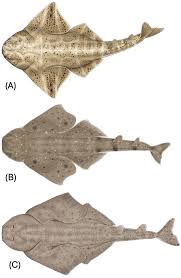
Introduction
The angel shark, known for its flat body and broad pectoral fins, is a remarkable species that inhabits the seafloor of many oceans. As a lesser-known member of the shark family, the angel shark has found itself in the spotlight due to its declining populations and conservation needs. Understanding the significance of this species is crucial not only for marine biodiversity but also for marine ecosystems as a whole.
Current Status and Threats
Recent studies indicate that several species of angel sharks, particularly the European angel shark (Squatina squatina), are facing severe threats, leading to their classification as endangered by the International Union for Conservation of Nature (IUCN). This decline is attributed to overfishing, habitat loss, and climate change. In places like the Mediterranean Sea, where their populations were once robust, the angel sharks’ numbers have plummeted due to unsustainable fishing practices.
Angel sharks are often victims of bycatch, caught unintentionally in fishing gear targeting other species. This has resulted in a noteworthy decrease in their populations, raising alarms among conservationists. The European Commission recently announced new measures to restrict fishing in critical habitats, aiming to protect the few remaining populations of these distinctive sharks.
Unique Characteristics
Angel sharks exhibit a fascinating morphology that allows them to blend seamlessly into their environments. Their flattened bodies and camouflage patterns enable them to lie motionless on the ocean floor, waiting to ambush prey. Their diet primarily consists of fish and invertebrates, making them important predators in their ecosystems.
Despite their fearsome appearance, angel sharks are relatively docile and pose little threat to humans. Their unique hunting strategy and behaviours are subjects of interest for marine biologists, who study their ecological roles within their habitats.
Conservation Efforts
Conservation organisations worldwide are working diligently to protect angel sharks from extinction. Efforts include establishing protected marine areas, raising awareness about sustainable fishing practices, and conducting further research to better understand their biology and habitat requirements. Initiatives like these aim to foster recovery and ensure future generations can appreciate these extraordinary creatures.
Conclusion
The angel shark, a remarkable yet endangered marine species, highlights the urgent need for effective conservation strategies. With increasing awareness and protective measures, there is hope that populations can stabilize and rebound. For readers, understanding the plight of the angel shark is a call to action—to consider the impact of human activity on marine life and support sustainable practices that preserve our oceans. Protecting the angel shark is not just about saving a species; it’s about maintaining the delicate balance of our marine ecosystems.
You may also like

Understanding Mosquera Wolves and Their Conservation Needs

The Unique Biodiversity and Culture of Madagascar
